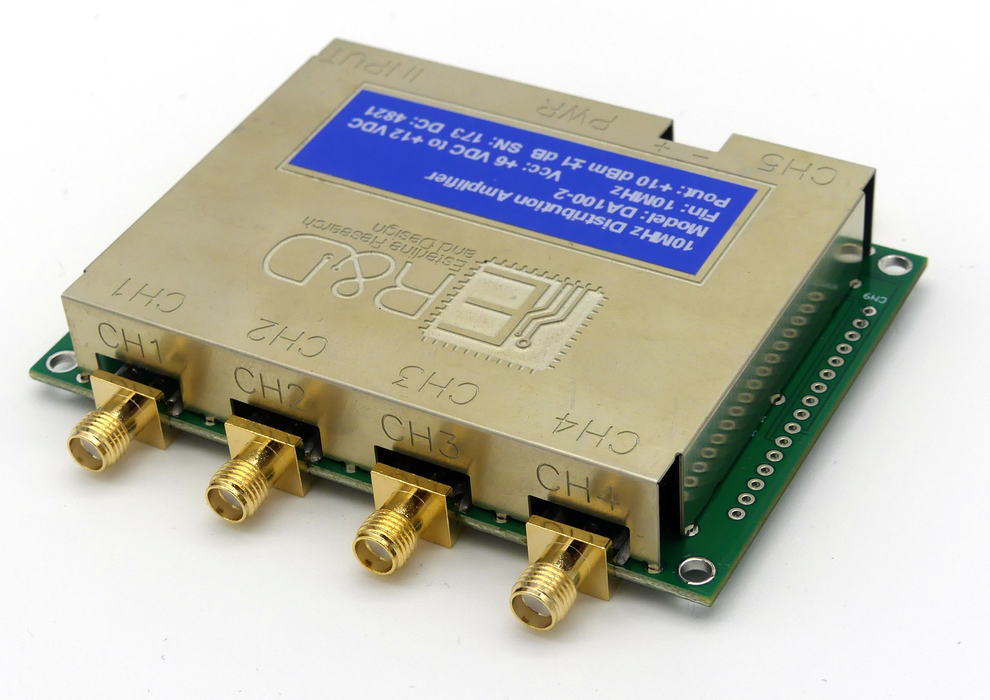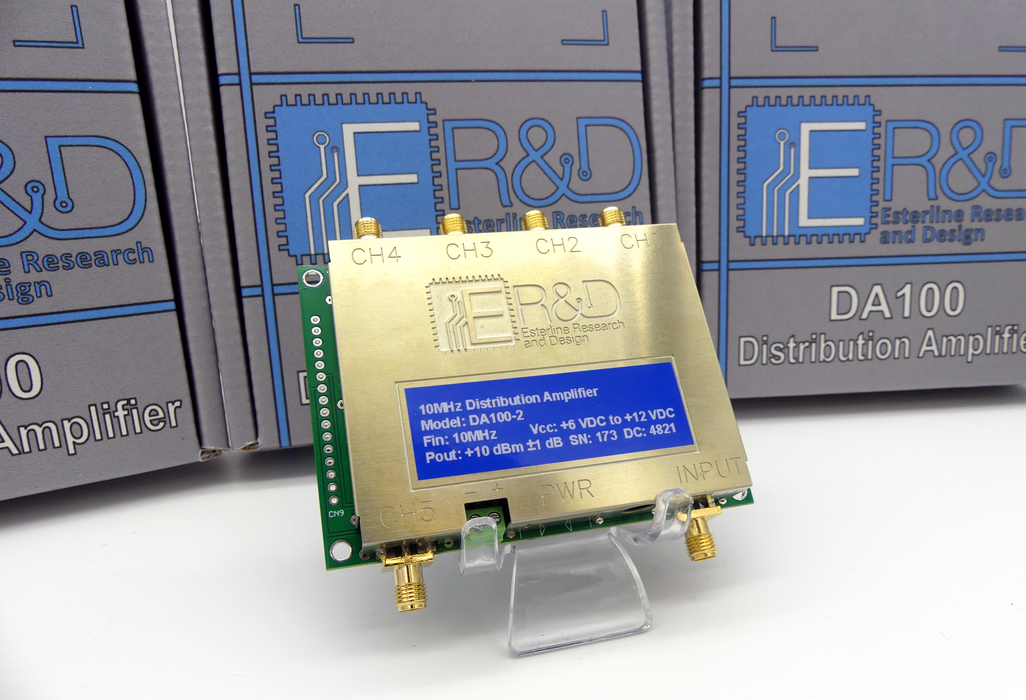
DA100-4 Low Noise 5 Channel 5 MHz Distribution Amp. w/ SMA Connectors
Data Sheet:
![]() DA100 Series Specification Sheet
DA100 Series Specification Sheet
Operation Manual:
Functional Description:
The function of a Distribution Amplifier is to create multiple copies of a signal while minimally degrading its integrity. The DA100-4 model Distribution Amplifier is designed to distribute a low noise 5MHz frequency reference signal to multiple usage points, such as Automated Test Systems or Test Benches where equipment requiring a 5MHz reference may be employed.
The amplifier has one input and five outputs. The device may be configured with either SMA or BNC connectors (see Options Section for more information). The input is AC coupled and offers an input source impedance of 50 Ω at 10 MHz.
The input is conditioned by a limiter circuit, which provides a fixed output level as well as high input gain. The high input gain allows the amplifier to provide the specified output power over the entire input power range. It also makes the amplifier tolerant of essentially any waveform with a duty cycle near 50%.
The input limiter is followed by three amplifier/low pass filter stages, which insure low distortion sine wave outputs. The outputs from the filter stages are supplied to fixed gain output amplifiers as illustrated in the block diagram below. This configuration minimizes channel to channel phase offsets (<1 nS); the phase offset from the input to any output is less than 5 nS at 10 MHz.
Multiple amplifiers may be ‘daisy chained’ together by connecting the output of channel five to the input of another DA100-4 device. However, this configuration increases phase errors between amplifiers. If channel to channel phase error is a concern, a better solution is to use a single amplifier to drive up to five additional amplifiers, thus providing up to 25 outputs with optimal channel to channel phase degradation.


